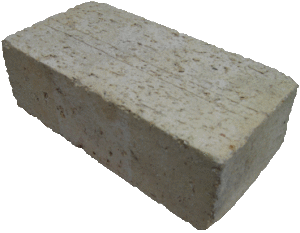Fire Bricks
Fire bricks are made of fire-clay or refractory clay, burnt at a high temperature in special kilns. Fire bricks are generally of a white or yellowish white colour, the colour of fire-clay is generally grey, and is somewhat greasy to the touch. A fire clay with a coarse open grain is found to be more refactory than the one with a close even texture. Fire-bricks are used for the lining of furnaces, boilers, combustion chambers and chimney flues, where great heat is developed.
Fire bricks should show no signs of fusion when heated to a temperature of about 1600 deg. C. Crushing strength of fire bricks should be not less than 125 kg/sq. cm. Fire-bricks weigh about 2400 kg/cu. m and absorb water from about 5 to 10 per cent.
Fire bricks are always set in a mortar of fire-clay and not in lime or cement. About 0.06 Cu- m (75 kg) of fire-clay is required for laying 100 bricks. The joints of the fire-brick lining should be made as fine as possible. The fire bricks should be merely dipped in well puddled fire-clay mixed with water to the consistency of paste, so that there is no appreciable thickness of joint between the fire bricks. The fire brick linings should be laid one course of headers followed by two courses of stretchers. Lime stone is to be avoided in construction intended to be fire-proof.

